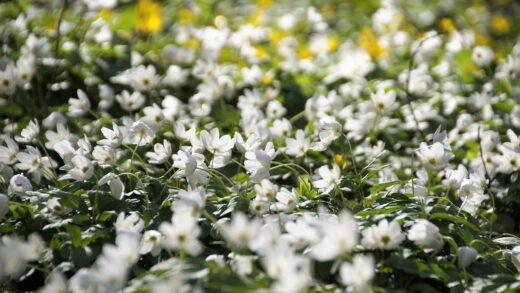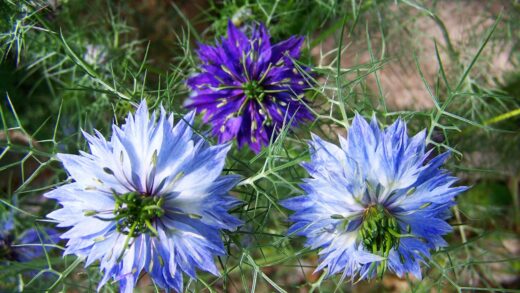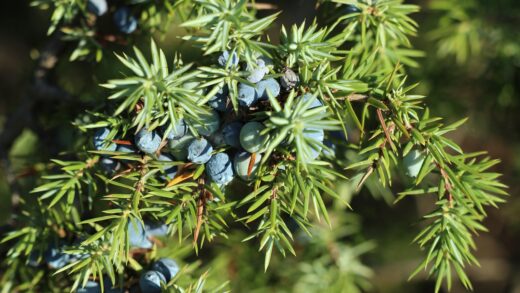Understanding the dormancy phase
The period of winter for the English bluebell is not one of inactivity, but a crucial phase of quiet preparation. After the foliage dies back in early summer, the bulb enters a state of dormancy, a remarkable adaptation that allows it to survive the heat and potential drought of summer as well as the cold of winter. During this time, all visible, above-ground growth ceases. However, beneath the soil surface, the bulb is a self-contained package of stored energy, containing the embryonic leaves and flower for the following spring. It is a period of rest and resilience, where the plant conserves its resources while waiting for the right environmental cues to begin growing again.
This dormancy is not uniform throughout the entire period from summer to the following spring. The summer dormancy is typically the deepest, a response to heat and dry conditions. As autumn arrives with its cooler temperatures and increased moisture, the bulb is stimulated to break this deep dormancy. This is when a critical, unseen process begins: the development of a new root system. These roots anchor the bulb and are essential for absorbing the water and nutrients that will be required to fuel the rapid and energy-intensive growth of leaves and flowers in the spring.
As winter sets in, the bulb, now equipped with a developing root system, enters a different phase of dormancy, one dictated by cold temperatures. The growth of the shoots is held in check by the cold, preventing them from emerging prematurely and being damaged by harsh frosts. However, this period of cold is not simply a waiting game; it is an essential requirement for many temperate bulbs, including bluebells. This cold stratification process is a necessary trigger that ensures the bulb will be physiologically ready to flower once conditions become favourable. Without a sufficient period of winter chill, flowering can be poor or non-existent.
Therefore, understanding this dormancy cycle is fundamental to proper winter care. It is a mistake to think that because you cannot see the plant, nothing is happening. The autumn and winter months are a time of vital underground activity, including root development and physiological preparation for flowering. The goal of the gardener during this period is to protect the bulb and provide the conditions it needs to successfully complete these essential processes, ensuring a spectacular display when spring finally arrives. It is a testament to the plant’s perfect adaptation to its seasonal climate.
The importance of a protective mulch layer
One of the most beneficial actions a gardener can take to protect English bluebells over the winter is to apply a layer of organic mulch in the autumn. This practice directly mimics the natural process in a woodland, where a thick blanket of fallen leaves accumulates on the ground each year. This layer of mulch serves as a vital insulating blanket, shielding the dormant bulbs from the most extreme fluctuations in soil temperature. While the bulbs are hardy and adapted to cold, a mulch layer moderates the soil, preventing it from freezing too deeply and protecting the newly formed autumn roots from damage.
More articles on this topic
The type of mulch used is important. The ideal material is leaf mould, as it most closely replicates the natural woodland floor. However, well-rotted garden compost, shredded bark, or even straw can also be effective. The mulch should be applied in a generous layer, typically 5 to 7 centimetres deep, over the entire area where the bluebells are planted. This should be done in mid-to-late autumn, after the ground has cooled but before the first hard frosts are expected. This timing ensures that the soil’s warmth is trapped, providing a more stable environment for the bulbs.
Beyond insulation, the mulch layer also plays a crucial role in protecting the soil structure. During winter, bare soil is susceptible to erosion from heavy rain and wind. It can also become heavily compacted by the impact of raindrops, which can lead to poor drainage. A layer of mulch breaks the force of the rain, preserving the loose, friable soil structure that is so important for the health of the bulbs. It helps the soil to absorb winter moisture without becoming waterlogged, ensuring good aeration around the dormant bulbs.
Furthermore, as the organic mulch slowly decomposes over the winter, it provides a gentle, slow-release supply of nutrients into the soil. This enriches the soil, feeding the soil microorganisms and ensuring that a good supply of nutrients is available for the plants when they begin their active growth in the spring. This simple, annual act of mulching provides comprehensive winter protection, addressing temperature regulation, soil protection, and long-term nutrition all in one step. It is the single most important task in the winter care of English bluebells.
Managing water and drainage in winter
While English bluebells require moisture to trigger their autumn root growth, managing water and ensuring proper drainage throughout the winter is critical to their survival. The greatest threat to the dormant bulbs during this period is not the cold itself, but the combination of cold and excessive wetness. Soil that remains saturated and waterlogged for long periods can lead to a lack of oxygen, which can suffocate the roots and create the perfect anaerobic conditions for various fungal and bacterial rots to take hold. A bulb that rots over the winter will not produce a plant in the spring.
More articles on this topic
The foundation of good winter drainage is laid during the initial planting and soil preparation. If you have heavy clay soil, which is prone to becoming waterlogged, it is essential to amend it thoroughly with organic matter and horticultural grit before planting any bulbs. This improves the soil’s porosity, creating channels through which excess water can drain away from the bulbs. For established colonies, if you notice that an area tends to puddle or remain soggy after winter rain, it may be necessary to lift the bulbs in the following dormant season and improve the soil structure before replanting.
During the winter itself, there is little you can do to alter the amount of rainfall, but you can take steps to manage its impact. Avoid walking on the soil where the bluebells are planted, as this can cause compaction, destroying the soil structure and impeding drainage. The autumn mulch layer also helps in this regard, absorbing some of the impact of heavy rain and allowing water to percolate more gently into the soil. For bluebells planted in containers, ensuring the pots have ample drainage holes and are not left standing in saucers of water is absolutely crucial.
In very wet climates or particularly boggy gardens, it might be beneficial to plant bluebells on a slight slope or in a raised bed. This uses gravity to help pull excess water away from the root zone, providing the well-drained conditions the bulbs need to survive the winter unscathed. The goal is to maintain a soil that is cool and moist, but never sodden. Careful observation of your garden’s drainage patterns and proactive soil improvement are the keys to successfully navigating the challenges of a wet winter.
Winter care for bluebells in containers
Growing English bluebells in containers can be a wonderful way to enjoy their beauty on a patio or balcony, but it requires some specific considerations for winter care. Unlike bulbs in the ground, which are insulated by the large mass of surrounding soil, bulbs in pots are much more exposed to the elements. The soil in a container can freeze solid much more quickly and deeply than garden soil, which can damage or kill the bulbs. Therefore, providing adequate insulation is the primary task for wintering container-grown bluebells.
One of the most effective methods is to move the containers to a more sheltered location for the winter. Placing them against the wall of the house, in a cold frame, or in an unheated garage or shed can provide sufficient protection from the harshest winds and temperature extremes. The goal is not to keep them warm, as they still require a period of cold to flower properly, but simply to buffer them from the severe freeze-thaw cycles that can be so damaging. If moving the pots is not an option, you can wrap the outside of the containers with bubble wrap or hessian sacking to provide an extra layer of insulation.
Moisture management is also critically important for potted bluebells. The soil in containers should be kept very lightly moist throughout the winter, but it must never be allowed to become waterlogged. Before winter sets in, ensure the pot’s drainage holes are clear and not blocked. It is also wise to raise the pots off the ground by placing them on ‘pot feet’ or bricks. This allows excess water to drain away freely and prevents the base of the pot from freezing to the ground during icy weather. Check the compost periodically during dry spells, but be very cautious not to overwater, as this is the most common cause of failure for containerized bulbs in winter.
As with garden-grown bluebells, a top layer of mulch can be beneficial for those in pots. A layer of gravel, grit, or fine bark chips on the surface of the compost can help to prevent the soil from being washed out by heavy rain and provides a small amount of insulation. It also gives a neat appearance and can help to deter pests like slugs. By providing this protection from extreme cold and ensuring excellent drainage, you can successfully overwinter your container-grown English bluebells and look forward to a beautiful display of portable woodland charm in the spring.


















